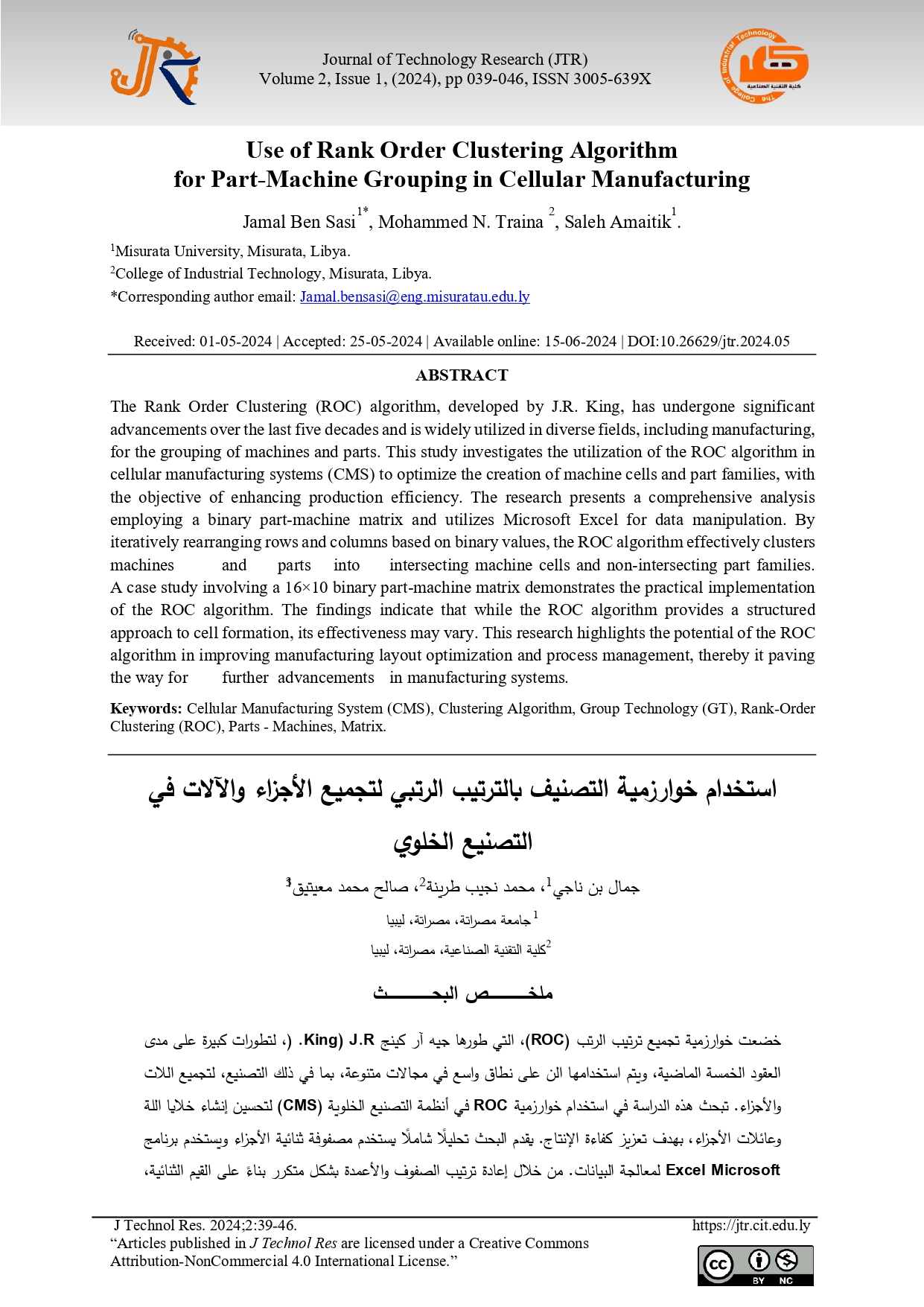Use of Rank Order Clustering Algorithm for Part-Machine Grouping in Cellular Manufacturing
DOI:
https://doi.org/10.26629/jtr.2024.05Keywords:
Cellular Manufacturing System (CMS), Clustering Algorithm, Group Technology (GT), Rank-Order Clustering (ROC), Parts - Machines MatrixAbstract
The Rank Order Clustering (ROC) algorithm, developed by J.R. King, has undergone significant advancements over the last five decades and is widely utilized in diverse fields, including manufacturing, for the grouping of machines and parts. This study investigates the utilization of the ROC algorithm in cellular manufacturing systems (CMS) to optimize the creation of machine cells and part families, with the objective of enhancing production efficiency. The research presents a comprehensive analysis employing a binary part-machine matrix and utilizes Microsoft Excel for data manipulation. By iteratively rearranging rows and columns based on binary values, the ROC algorithm effectively clusters machines and parts into intersecting machine cells and non-intersecting part families. A case study involving a 16×10 binary part-machine matrix demonstrates the practical implementation of the ROC algorithm. The findings indicate that while the ROC algorithm provides a structured approach to cell formation, its effectiveness may vary. This research highlights the potential of the ROC algorithm in improving manufacturing layout optimization and process management, thereby it paving the way for further advancements in manufacturing systems.
Downloads

Downloads
Published
Issue
Section
License

This work is licensed under a Creative Commons Attribution-NonCommercial 4.0 International License.














